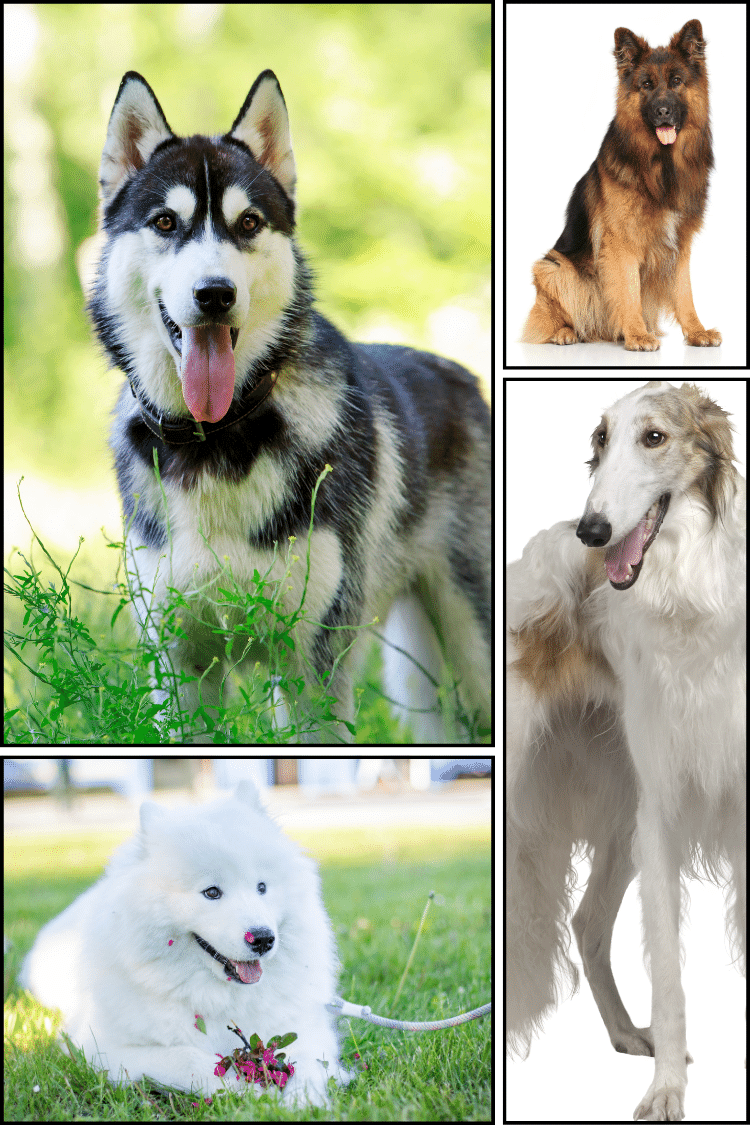Skin Tags On Dogs: Causes And Treatment

Dog skin tags, often soft and swinging loosely, are benign growths that are mostly non-serious and can appear anywhere in the dog's body. They get more of these when they get older.
Removing dog skin tags is not always necessary, but it is essential to know the reason behind its emergence and possible treatment options. Age, heredity, skin irritation, and others can be the factors behind skin tag development.
Hence, this blog talks about the causes of skin tags in dogs, with possible treatment options and suggestions to make sure that your dog is in good condition.
What are Dog Skin Tags?
Benign growths known as skin tags can appear on a dog's skin. Usually, a slender stalk connects these fleshy, tiny protrusions to the skin. They are frequently linked to locations like the armpits, groin, or chest that experience repetitive friction, though the precise reason is yet unknown.
Most of the time, skin tags are benign and do not hurt the dog, but, their position may make them more vulnerable to irritability or harm, which could result in bleeding or infection.
Veterinary care is advised in these situations as well as if a skin tag exhibits changes in texture, size, or appearance. Although not communicative, skin tags can be ugly and may need to be removed for aesthetic purposes or to avoid issues.
Common Locations for Skin Tags on Dogs

Some common locations for dog skin tags are:
- Armpits and Groin
- Chest and Belly
- Elbows and Knees
- Neck and Face
- Other Areas
Canine skin tags are particularly common in locations where there is constant friction or discomfort. Because of this frequent rubbing and movement, the armpits, groin, and chest are ideal places for their development.
Also, skin tag production can occur on pressure sites including the underside of the chest, knees, and elbows. certain benign growths may arise as a result of frequent contact with surfaces in certain locations.
Although skin tags may occur in other areas of a dog's body, these areas consistently exhibit a greater occurrence because of the constant friction or discomfort.
Symptoms and Signs of Dog Skin Tags
It's critical to keep an eye out for any modifications to the skin tag's look. Signs and symptoms that may need attention include:
Increase in Size
A dog's skin tag should be taken very seriously if it grows larger very quickly. While the size of many skin tags doesn't change much over time, an abrupt or noticeable increase may point to a problem.
These alterations could indicate the emergence of an infectious or inflammatory disease or the conversion of a benign into a malignant one. To identify the reason for the rapid development and to put the right treatment plans in place, prompt veterinary evaluation is essential.
Color Change
A dog's skin tag color shift is a significant sign of possible underlying problems. Skin tags in good health usually stay the same color. However, the emergence of redness, darkening, or an atypical pattern of pigmentation may indicate inflammation or infection.
Bleeding or Discharge
Bleeding or discharge coming from a skin tag indicates that there may have been an infection or trauma. Minor cuts may bleed for a short while, but prolonged or severe bleeding has to be treated by a veterinarian.
Likewise, the existence of any discharge, purulent, serous, or otherwise indicates the need for immediate medical attention due to an underlying infection.
Inflammation
Dog skin tag inflammation is evident in the affected area when it swells, turns red, and becomes warmer. These signs frequently point to a more serious problem, including an inflammation or infection.
It is critical to keep an eye out for these symptoms since they may indicate a developing issue that calls for urgent veterinarian care. Giving inflammatory conditions prompt attention can help avoid problems and maintain the dog's general health.
Behavior Changes
Dog behavior changes, including persistent licking, scratching, or biting at a particular spot, sometimes indicate underlying discomfort or annoyance. Although there are many possible causes for these behaviors, their connection to a skin tag raises the possibility of pain, inflammation, or infection.
When these behaviors are persistent, a veterinarian should be consulted to identify the underlying reason and develop a plan of care.
Causes of Skin Tags in Dogs

It's unclear exactly what causes skin tags in dogs. Nonetheless, some variables are thought to have influenced their development:
Friction and Irritation
Dog skin tag growth is primarily associated with friction and inflammation. These benign growths are thought to develop as a result of repeated mechanical stress on the skin from rubbing or pressing.
As a result, skin tag incidence is widespread in places like the groin, elbows, and armpits that are prone to friction. In veterinary dermatology, there is a prevalent concept that links skin tag development to physical discomfort, however, this relationship has not been conclusively confirmed.
Age
Another important element in the formation of skin tags in dogs is age. Although skin tags can develop at any age, there is a clear association between the occurrence of skin tags and advanced age.
Although the precise mechanisms underlying this link remain unclear, it is thought that older dogs are more susceptible to skin tag formation due to a combination of physiological changes, environmental influences, and natural aging.
Breed
It has been shown that dogs exhibit breed-specific predispositions to develop skin tags. Although these benign growths can occur in any breed of dog, some seem to be more common than others.
It is important to note, that this correlation does not rule out the possibility of skin tags in other breeds. More research is necessary to determine the underlying mechanisms that contribute to this breed-related sensitivity, which are currently mostly unknown.
Genetics
Canine skin tag formation may be influenced by genetic susceptibility. It is hypothesized that a dog's susceptibility to these benign growths may be influenced by inherited genetic features, while the precise mechanisms underlying this phenomenon remain unclear.
Dog Skin Tags Treatment
Dog skin tag treatment frequently varies on the size, location, and discomfort level of the tag. These are a few typical treatment options:
Monitoring
For minor, asymptomatic skin tags, a cautious approach might be taken. A skin tag can be regularly checked for changes if it is not uncomfortable or showing any indications of infection or inflammation.
It is critical to regularly observe the size, shape, and color of the skin tag to identify any changes that may indicate potential issues.
Although this method works well for benign growths, it is crucial to speak with a veterinarian to set up a suitable monitoring schedule and to handle any issues right away.
Veterinary Evaluation
Determining the best course of action for a dog's skin tag requires veterinary evaluation. A skilled veterinarian can distinguish the growth from potentially dangerous lesions with accuracy.
The vet will evaluate the characteristics, location, and any accompanying symptoms of the skin tag through a comprehensive examination. A biopsy could be carried out if required to rule out other underlying diseases.
To perform this diagnostic process, a tissue sample must be obtained for microscopic inspection. Based on the results, the veterinarian can suggest individualized treatment plans for each pet, including surgical removal, observation, or alternative therapy.
Surgical Removal
Larger or more troublesome skin tags are frequently advised for surgical excision. Depending on the quantity and size of the tags, either local or general anesthetic can be used for this usually simple process.
The veterinarian selects the anesthesia based on each dog's condition. By completely removing the skin tag during surgery, its benign nature can be confirmed by histological analysis.
In most cases, there is little post-operative care given; wound healing and infection prevention are the main priorities.
Cryotherapy
Dog skin tags can be treated non-surgically with cryotherapy, which is applying extremely cold temperatures to the afflicted area. Usually, the skin tag is frozen with liquid nitrogen, which causes it to gradually separate from the skin over time.
This is a very rapid and non-invasive technique that frequently requires little to no sedation. While it works well to remove minor skin tags, more extensive growths could require a different strategy for treatment.
Cauterization
Skin tag removal can also be performed by a medical process called cauterization. This technique involves applying an electric current to the skin tag, which causes it to burn away.
This procedure efficiently stops bleeding by sealing the underlying blood arteries in addition to removing the undesirable growth.
Even though cauterization is a fairly simple process, a trained vet should do it to reduce the chance of complications and guarantee the best possible healing outcome.
Laser Therapy
For the precise and least invasive eradication of canine skin tags, laser therapy is an option. With this advanced method, which needs only a little anesthetic, the skin tag is removed using a concentrated light beam.
The procedure's precision, rapidity, and decreased risk of bleeding and infection are its defining characteristics. In addition, laser therapy usually leaves fewer scars and short recovery times, which improves the patient experience in general.
This treatment option offers a quick and easy fix, making it very helpful for dogs that have several skin tags or ones that are in sensitive places.
Hence, the majority of dog skin tags don't need to be treated. In most cases, they are painless and harmless. It's crucial to refrain from trying to remove skin tags yourself at home as complications such as infection may result from this.
Preventing Skin Tag Formation

Preventing skin tag formation in dogs means maintaining overall skin health and reducing variables that contribute to their growth.
Regular Grooming
Consistent grooming is essential for maintaining healthy skin in dogs and can be quite effective in preventing the development of skin tags. Regular brushing and washing help to keep the coat free of dirt, debris, and dead skin cells, which lessens friction and discomfort to the dermal layers underneath.
These movements are especially helpful in rubbing areas like the neck, groin, and armpits, where skin tags are often developed. The chance of skin irritation is decreased by keeping a clean and healthy coat, which may also lessen the chance of benign growths like skin tags.
For the sake of the dog's general wellbeing and to prevent further irritating the skin, it is crucial to use gentle grooming methods and suitable products.
Balanced Diet
The foundation of ideal canine health, including the integrity of their skin and coat, is a balanced diet. Including vital nutrients like vitamins, minerals, and fatty acids is crucial to preserving the health of your dog's skin.
A well-fed dog is less likely to have skin-related problems, such as skin tags developing. Although a healthy diet cannot prevent all skin tags, it does greatly improve the health of the skin generally and lowers the risk of many dermatological issues.
Maintain Healthy Weight
In dogs, it's essential to maintain a healthy body weight to avoid skin tag formation. Increased skin-to-skin contact is a result of excess adiposity, especially in areas that are prone to friction like the groin, armpits, and skin folds.
The constant rubbing can provide an environment that is favorable to skin irritation and the subsequent growth of benign. On the other hand, a healthy weight lessens the possibility of this friction, which lowers the danger of developing skin tags.
The prevention of dermatological problems and general canine health and well-being depend on achieving and sustaining an ideal body condition through sensible nutrition and exercise.
Regular Vet Checkup
Routine visits to the veterinarian are essential for preserving the best possible health for dogs, especially their skin. Veterinary professionals may perform a thorough evaluation of a dog's skin condition during routine exams, spotting any anomalies, like skin tags, at an early stage.
Early detection is critical because it allows for prompt care and stops possible consequences from getting worse. A regular schedule of veterinary appointments combined with preventive care can greatly improve a dog's general health and help owners proactively manage dermatological issues.
Skin Tags: Leave Them or Remove Them?
When deciding whether to remove a skin tag from a dog, considerable thought is often required. Skin tags are frequently benign growths that don't hurt or pose a health risk. They can therefore be left alone without suffering any negative effects.
However, this choice may be influenced by several circumstances. If skin tags in sensitive areas like the groin or armpits are constantly rubbed, they could become infected or irritated. Also, bleeding or trauma may result if a skin tag unintentionally gets trapped on something.
Even though it is uncommon, it is crucial to rule out the possibility that a skin tag is malignant. To keep an eye on any changes in the look or behavior of these growths, routine veterinary checks are essential.
In the end, removing a skin tag should be decided after consulting a veterinarian, who can evaluate the particular situation and suggest the best course of action.
Top Lists







